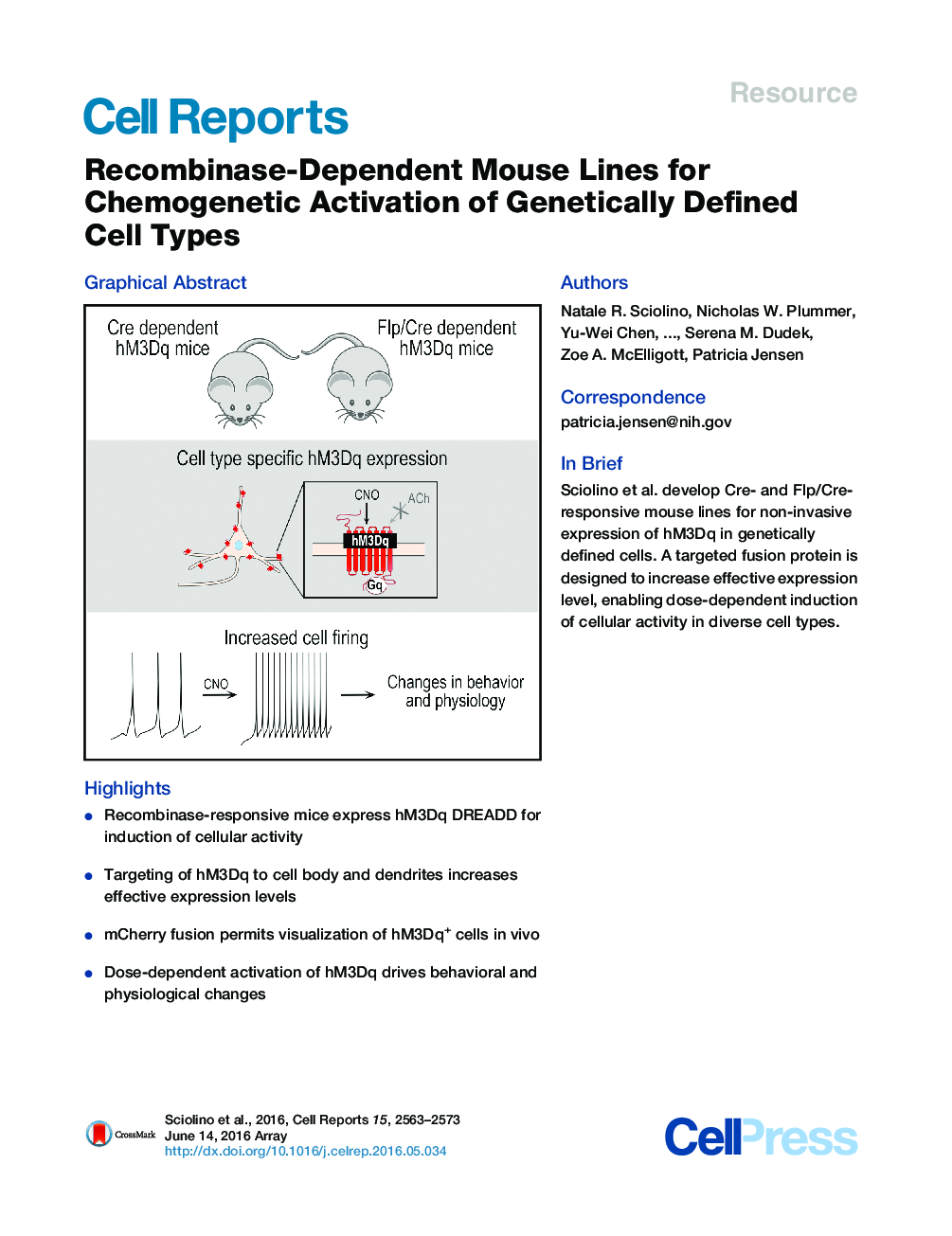| Article ID | Journal | Published Year | Pages | File Type |
|---|---|---|---|---|
| 2038974 | Cell Reports | 2016 | 11 Pages |
•Recombinase-responsive mice express hM3Dq DREADD for induction of cellular activity•Targeting of hM3Dq to cell body and dendrites increases effective expression levels•mCherry fusion permits visualization of hM3Dq+ cells in vivo•Dose-dependent activation of hM3Dq drives behavioral and physiological changes
SummaryChemogenetic technologies, including the mutated human Gq-coupled M3 muscarinic receptor (hM3Dq), have greatly facilitated our ability to directly link changes in cellular activity to altered physiology and behavior. Here, we extend the hM3Dq toolkit with recombinase-responsive mouse lines that permit hM3Dq expression in virtually any cell type. These alleles encode a fusion protein designed to increase effective expression levels by concentrating hM3Dq to the cell body and dendrites. To illustrate their broad utility, we targeted three different genetically defined cell populations: noradrenergic neurons of the compact, bilateral locus coeruleus and two dispersed populations, Camk2a+ neurons and GFAP+ glia. In all three populations, we observed reproducible expression and confirmed that activation of hM3Dq is sufficient to dose-dependently evoke phenotypic changes, without extreme phenotypes associated with hM3Dq overexpression. These alleles offer the ability to non-invasively control activity of diverse cell types to uncover their function and dysfunction at any developmental stage.
Graphical AbstractFigure optionsDownload full-size imageDownload as PowerPoint slide
